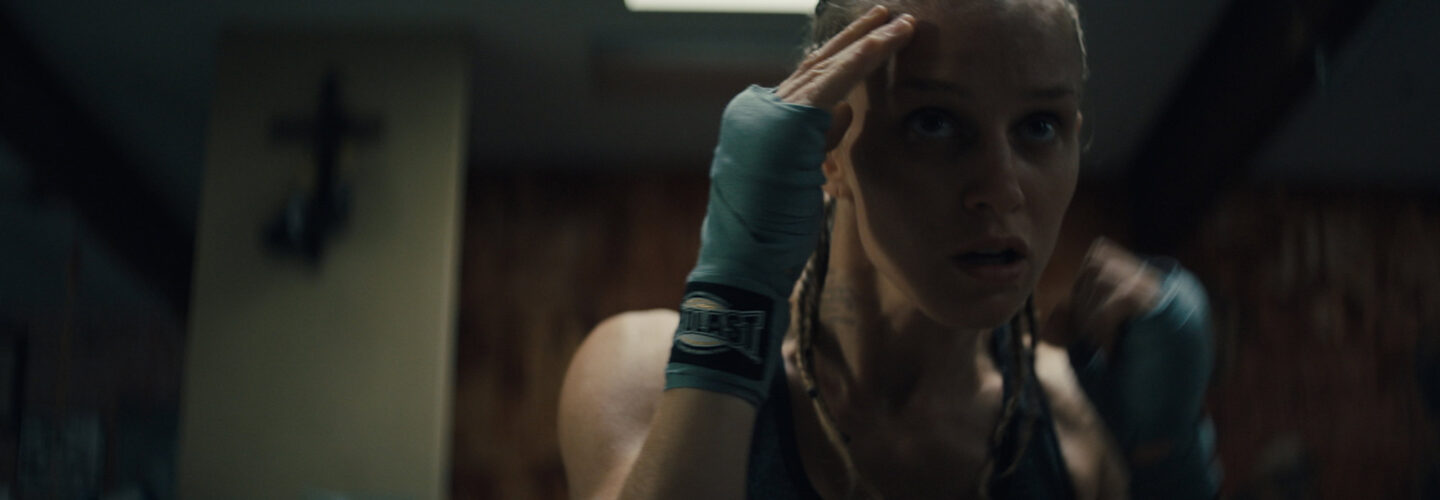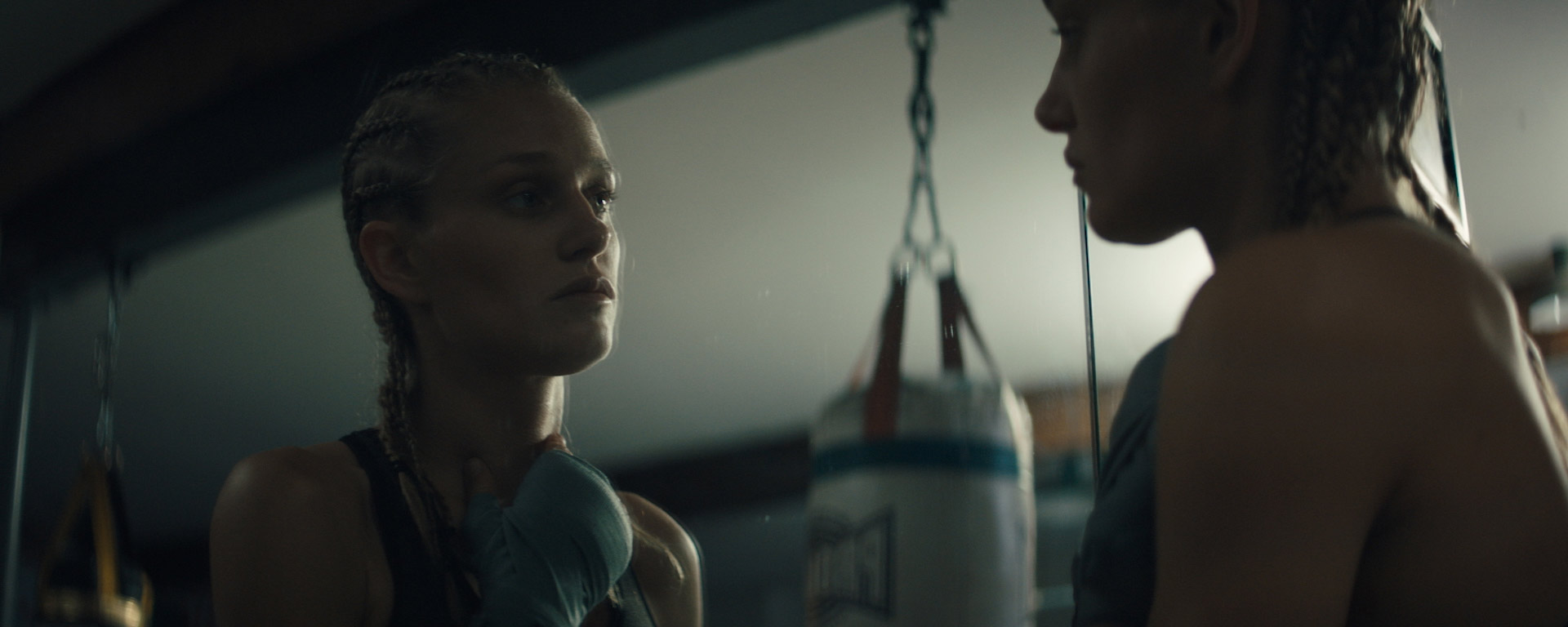
An engaging example of how economical filmmaking can lead to a narrative rich in emotional tension, Evan Owen Dennis’ Guerra sees a troubled female boxer go toe to toe with her former trainer and his new fighter as she seeks a path to forgiveness following her return from prison. In the following guest post, Evan shares how numerous considerations behind the camera led to this compelling, down to earth take on the boxing genre in which the stakes remain very personal.
I started writing the first draft of Guerra in 2015. I was heavily immersed in the boxing world – training 4 to 5 times a week and getting in some really tough sparring sessions. My life was at the gym. When it came time to write a short, I really just went for what was super personal to me at the time. I was really drawn to this idea of a story that takes place in a boxing gym but that wasn’t about a championship fight or a path to glory kind of narrative. It’s kind of the anti-boxing boxing film in a way. There’s no belt on the line, no heroes – this is just a personal story about redemption.
I was really drawn to this idea of a story that takes place in a boxing gym but that wasn’t about a championship fight or a path to glory kind of narrative.

I was attached to doing a short with Elizabeth Gilpin (who starred as the lead and produced) before we had a script. At first we had a few writers sent to us from CAA but the authenticity just wasn’t there. I already had written the script for Guerra, so I sent it over and that was that.
The one thing was to rewrite the story for a female character. Really I didn’t wind up changing much, the character stayed the same, the emotion was all the same. I had trained with a number of amazing female boxers at the gym and was really excited about the revisions to the script. Looking back at it now, the character of Grace evolved into something much more nuanced and interesting than I had even planned.
Having a boxing background I knew I needed the fight scenes to be absolutely authentic. I wanted the viewer to feel like they were right in the ring with fighters and could almost feel the impact of leather against flesh.
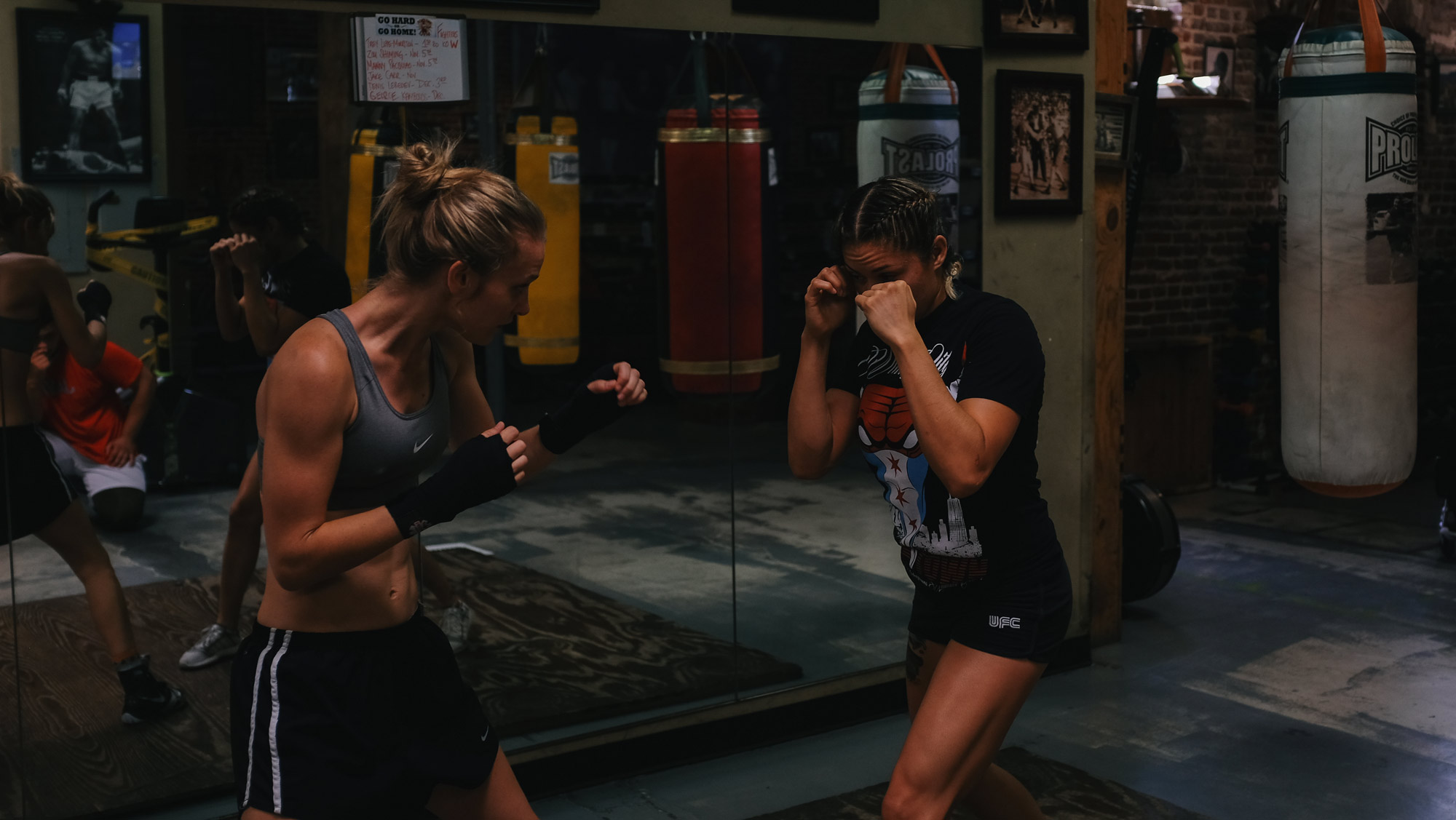


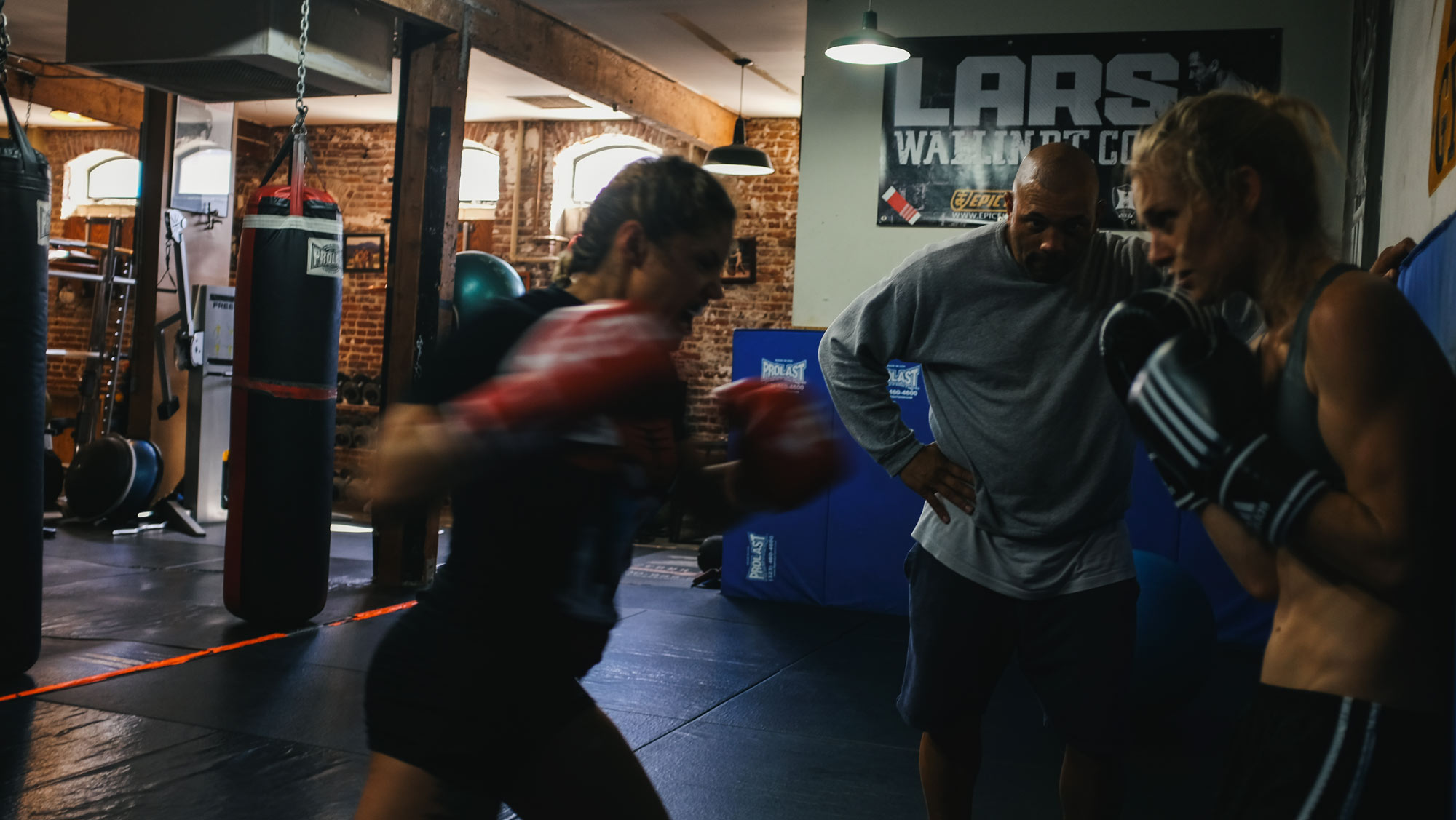
To prepare for the role, Elizabeth trained for 4 months, sometimes up to 6 hours a day with Olympic boxer Jose Navarro. Navarro is a very highly revered boxing trainer at Fortune Gym in West Hollywood, so I knew she was getting the best preparation possible. When Liz was in NYC I set her up with my longtime trainer and good friend Terry Southerland to continue to work with her and make sure her boxing would look relaxed and natural.
In the script, each round of boxing is given a narrative arc to build in intensity and needed to be choreographed quite specifically. Hall of fame heavyweight boxer Jeremy Williams stepped in to do the fight coordinating and also star in the film as Bernie, one of the trainers. The antagonist, Jessica Torres, was played by professional MMA fighter Pearl Gonzalez. Pearl was so dedicated to the production and drove all the way up from San Diego to work on fight coordinating with us. She did the film right before having to go right into camp for her next fight in the UFC.
The difficulty you run into when trying to make fight sequences so authentic, is that the actors are going to definitely take a few shots and eventually wear out.
Our prep time in coordinating these fights and getting the actors comfortable with each other was so important. The difficulty you run into when trying to make fight sequences so authentic is that the actors are going to definitely take a few shots and eventually wear out. You definitely want to avoid any real injury on set and make sure everyone can finish the day. Liz is so tough, but getting battered by a professional fighter like Pearl for 10 hours straight will wear on just about anyone.
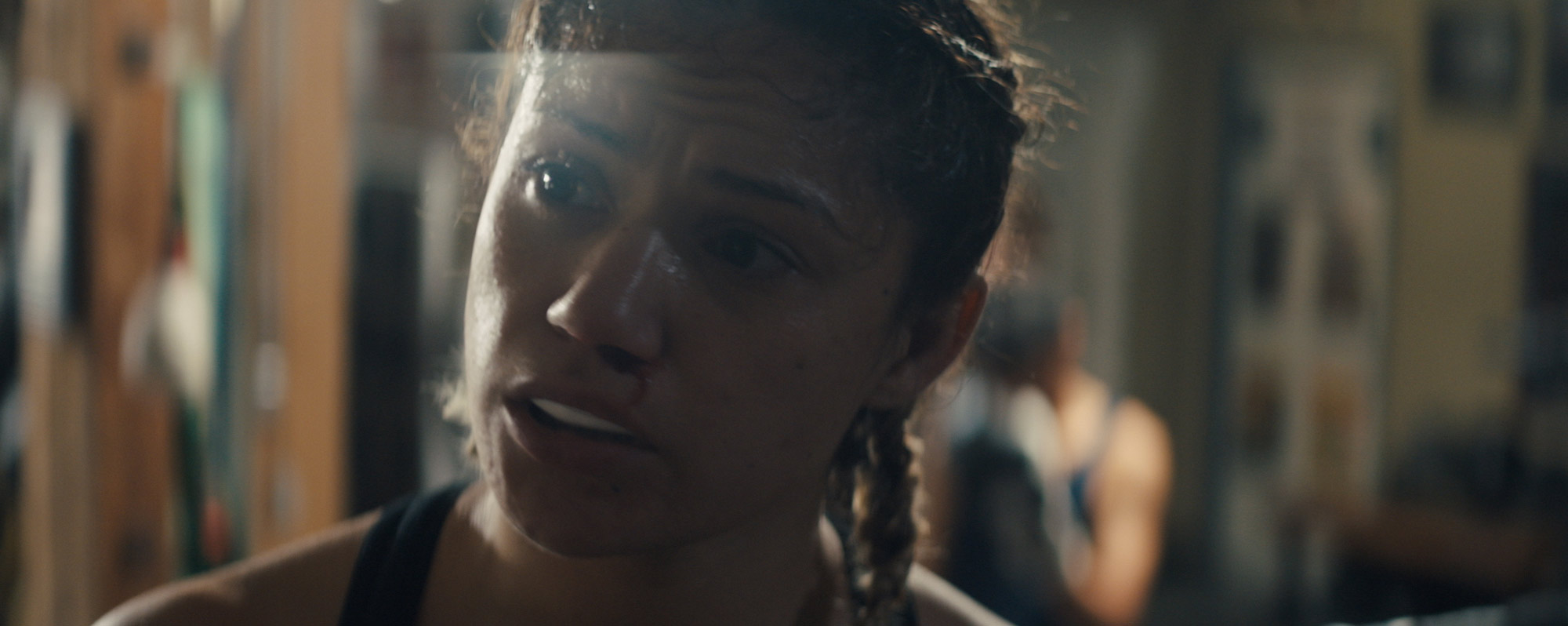

Aside from the boxing, the script called for some really dramatic acting. More than anything in my narrative work, the emotion is what I’m after. Working with the cast was absolutely the best part. Another good friend of mine, Frank Grillo (an incredible actor in his own right) produced and called in some really invaluable favors that just made the whole film possible. One of those was casting John Cenatiempo as Ricky. John had to walk this fine line between love and fear when playing Ricky and he did it so perfectly. He’s just one of those actors that comes so prepared and can turn it on in a split second. Not only is his dramatic acting amazing, but he has a vast career in combat training and martial arts – he spoke the language and could even step in to give tips on the fights.
We did a table read at a theatre in Hollywood with the entire cast and went through the entire script a few times. This gave me the chance to hear the dialogue spoken and make notes on it as needed. The other thing I did, was I had this track Elevator Song by Keaton Henson, I would play this song while writing all of the dramatic parts of the script and I also sent it to Elizabeth and John to listen to when thinking about the tone of the film.
There are a lot of moments in the film that are from Grace’s perspective and deal with a lot of isolation. She really had to do a lot of subtle acting using her eyes and expressions, not just dialogue. I think sharing music with the actors can be really helpful in communicating the tone of the scene when there’s little to no dialogue. I played the song out loud on my phone when everyone was preparing for the final scene, until John finally looked at me with a nod telling me he was ready. After that performance in the final scene there wasn’t a dry eye left in the building.

A huge part of my process is to work very closely with the cinematographer. I like to go into detail about how each shot will be designed and how it can really drive the story forward. I couldn’t have found a better cinematographer on earth to work with for this film than Ryley Brown. From my first phone call with Ryley, we discussed our love for Jacques Audiard’s Un Prophéte, and I knew we’d collaborate so well together.
Sharing music with the actors can be really helpful in communicating the tone of the scene when there’s little to no dialogue.
As with any short film project, trying to get everything done on budget is the biggest challenge you’ll face. This was no different, our locations really had us over quite a bit and it was really challenging to get the camera package we needed. Ryley wound up working with his contacts at Keslow and getting a great deal on the Alexa Mini with Kowa Anamorphic lenses. I use the Alexa Mini on a lot of jobs and it’s really an amazing camera. For what we needed it was really perfect because it’s very light and allowed us to be very mobile and keep our footprint very small.
In a lot of our locations we were working in really tight spaces: a prison cell (can’t get much tighter than that), a tiny locker room and even stealing shots on a bus in East LA. We just didn’t have the luxury to have a large crew with a full truck of equipment so we had to make the most out of everything we could. We designed the entire shoot so that just about everything is handheld – I think there’s really just one wide shot in the gym on sticks. We wound up shooting the entire film in 3 days and had to shoot all of the fight scenes in one day. I think on the final day we shot about 10 pages more or less. Yeah that’s insane now that I think about it.

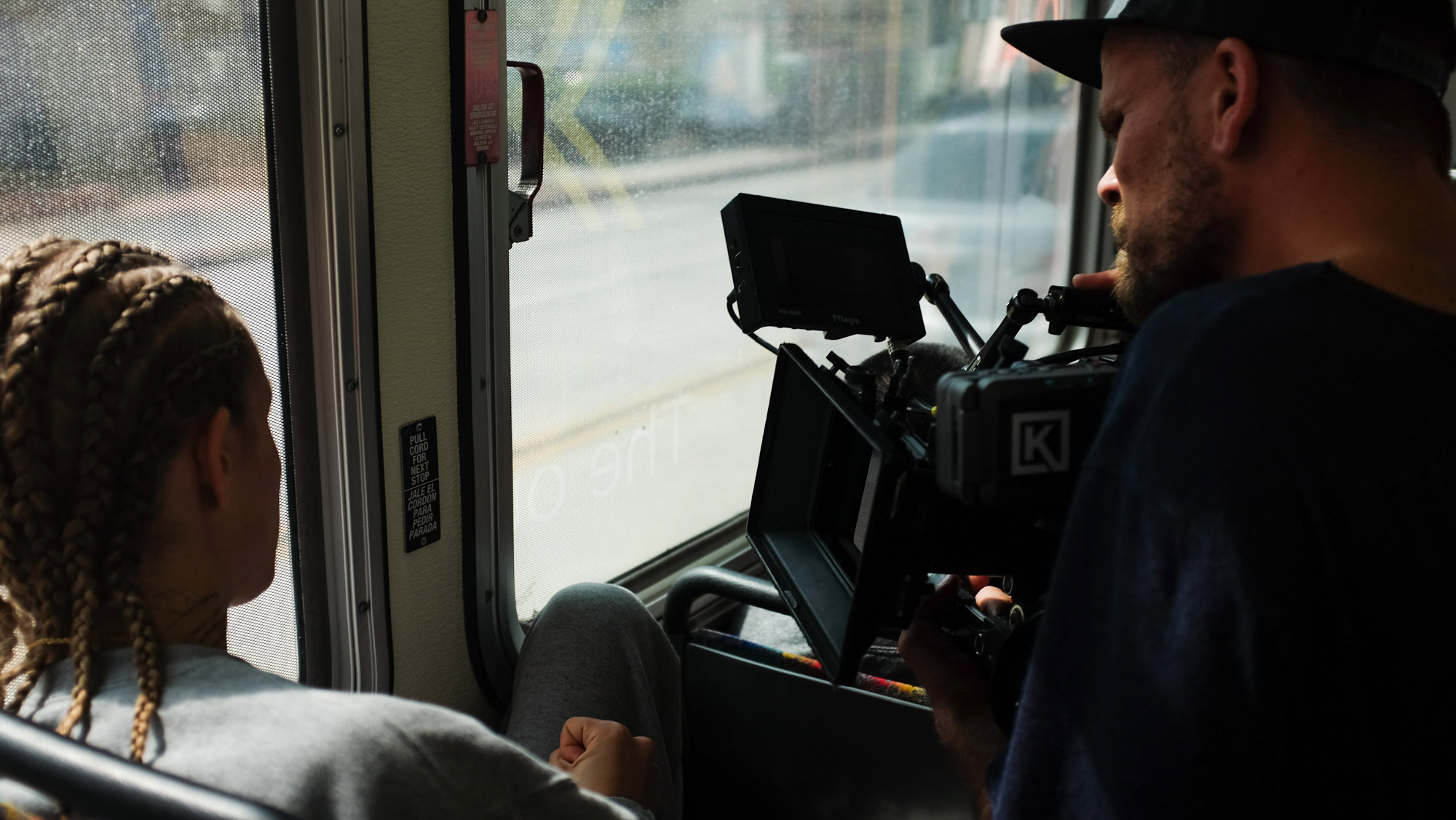
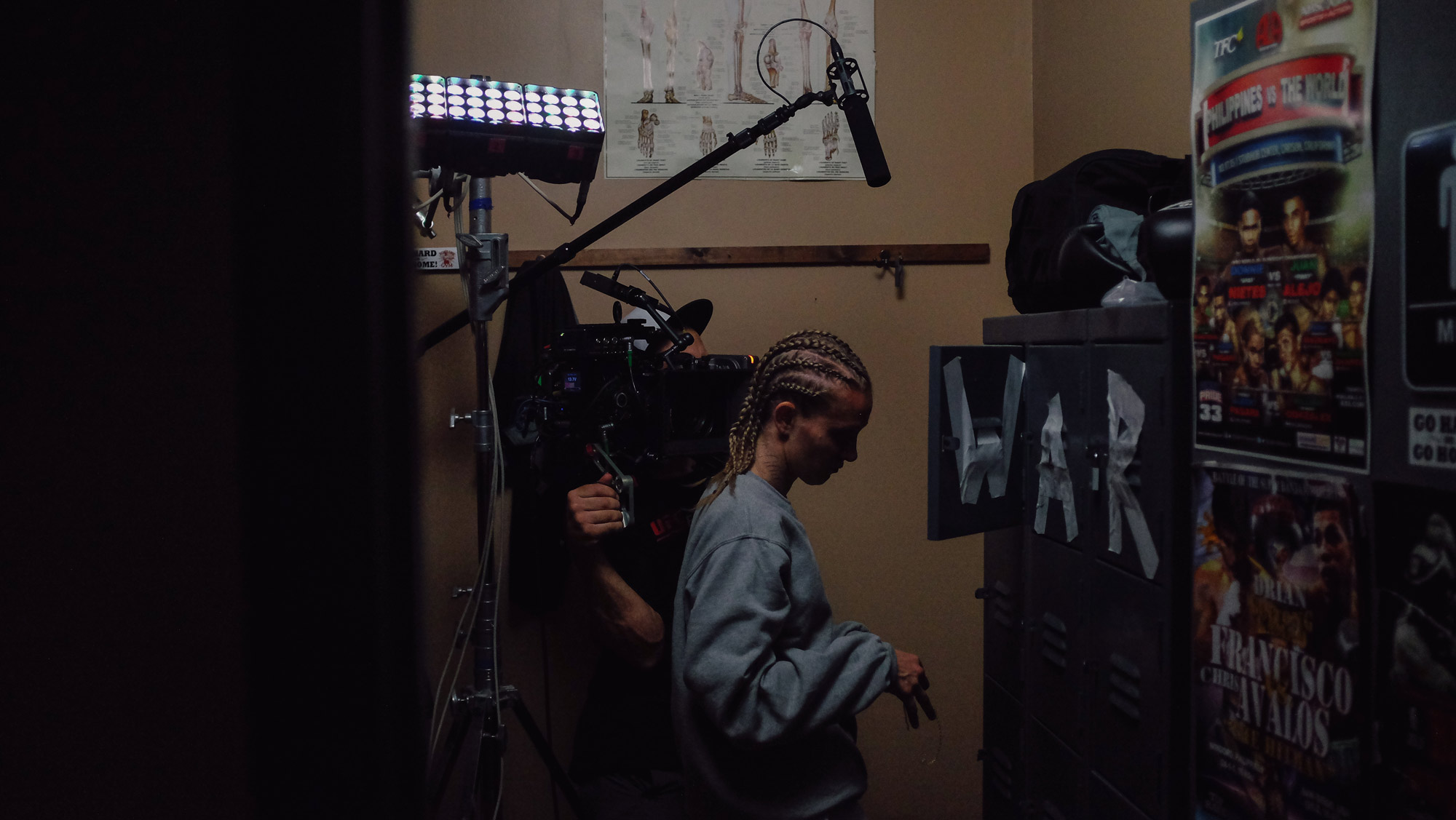
I knew that I wanted to shoot the film anamorphic from the start, I love the extra wide 2:35:1 aspect ratio, especially when being projected large. The Kowa Anamorphics only come with four lenses: a 40, 50, 75 and 100mm, so it’s actually a really cool challenge to have to work with those restrictions. On a film like this, you just don’t have the privilege to cover each scene with two cameras or a variety of lenses. We had to work within our limitations and find what was best for each shot. The last thing you want to do with a schedule like ours is to figure out any of that on the day or while you’re shooting.
Before the shoot, I hand draw a storyboard for each shot myself. I usually wind up with the storyboards in my back pocket the whole day and I’ll cross off the shots as we get them. I’ll also create a lined script that refers directly to my boards for each shot. We were working so fast and furious it’s just a way for me to stay super organized in my own head and know that I have enough material to tell the story.

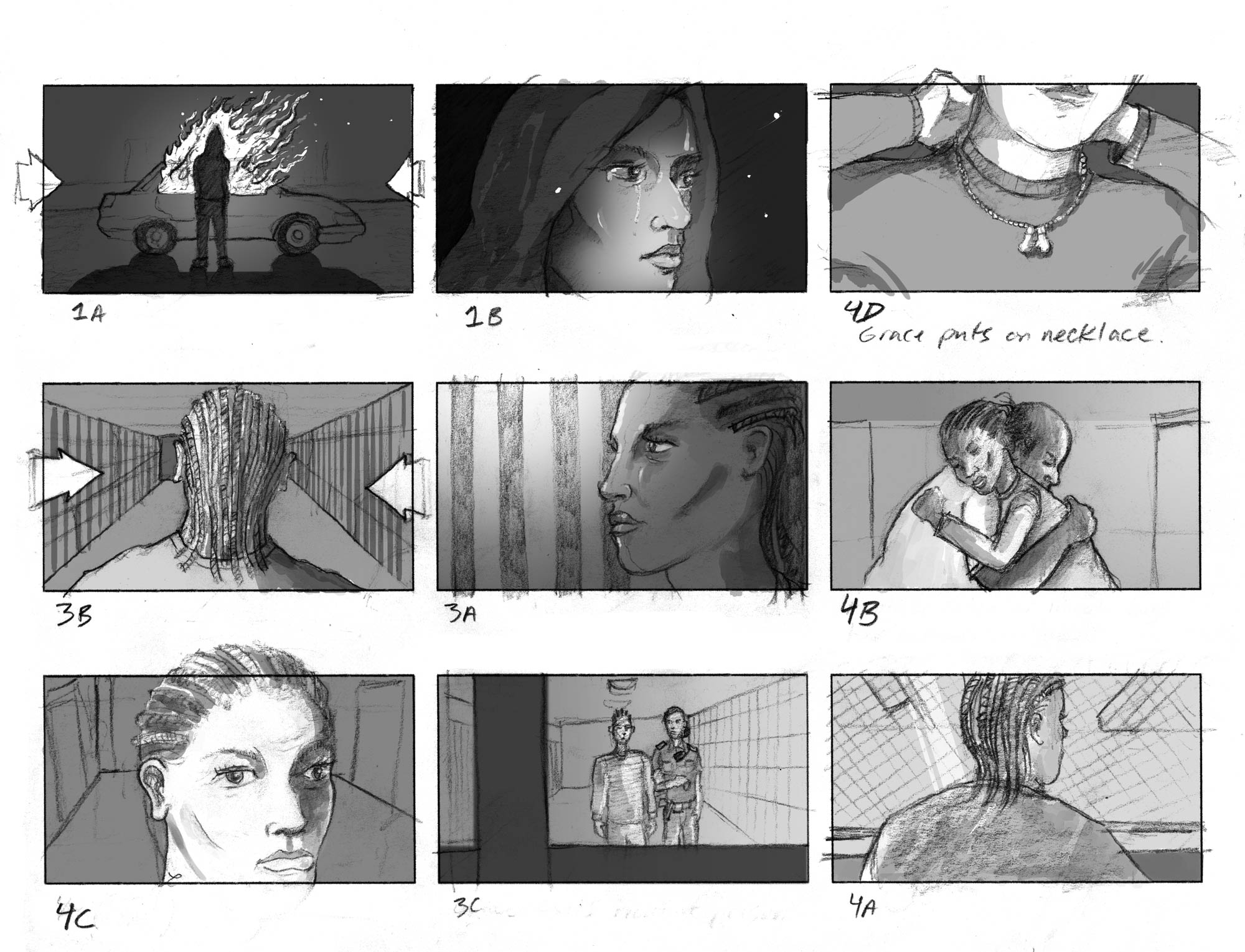
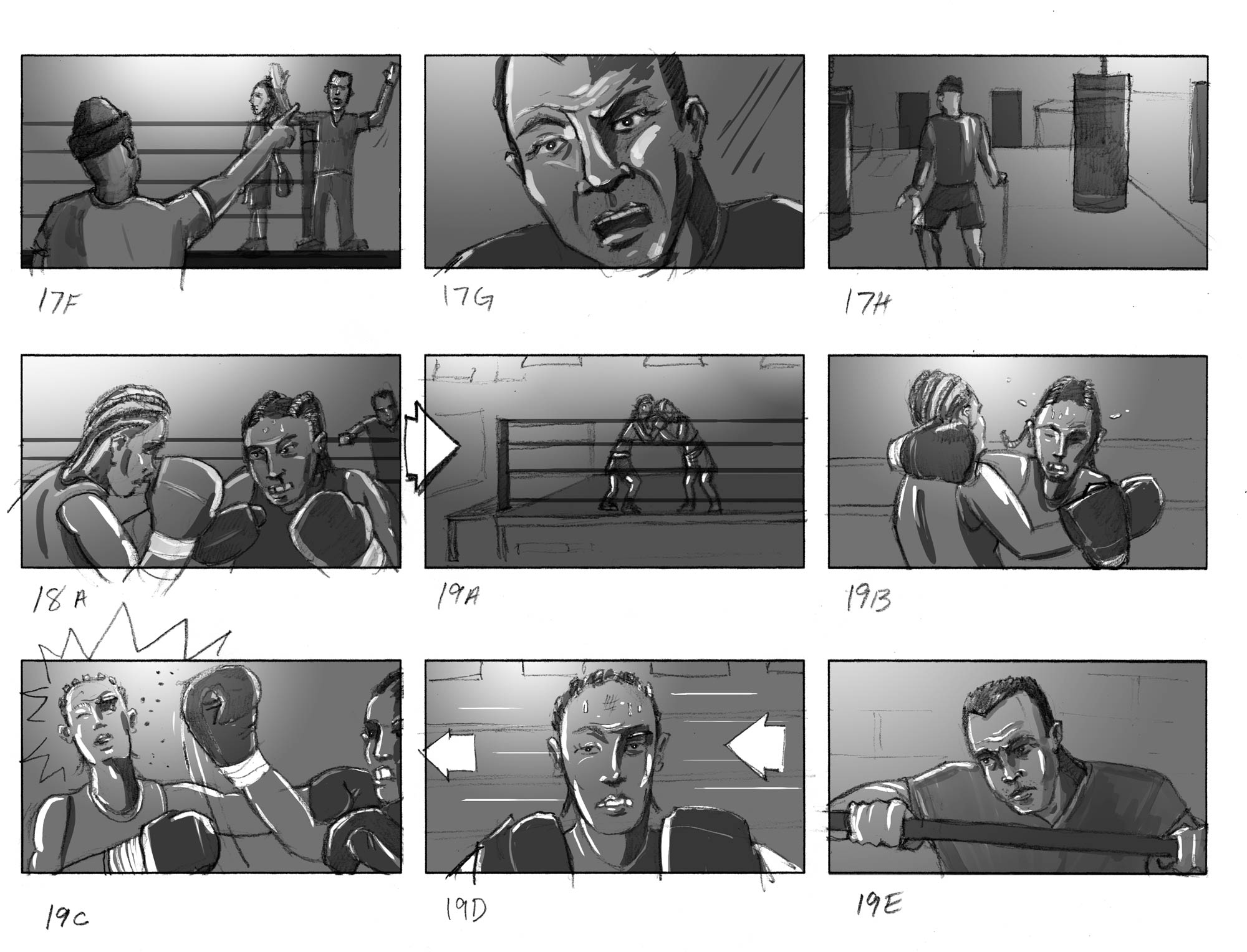
As the writer, you have to be able to think ahead and know what shots or even scenes can be cut.
In the end you’re going to have to lose something. It’s not fun, but as the writer, you have to be able to think ahead and know what shots or even scenes can be cut. In pre-production on the film, I had to cut a number of scenes that I had been writing and thinking about for years – It’s basically like watching your dreams just drift off to sea on a raft never to be seen again!
Once the shoot was over and everyone had a chance to decompress a bit, the next challenge began. We had blown through the entire budget getting the film shot, leaving us with nothing for post. This is definitely where we needed to call in every favor possible. The film had changed hands from a few editors initially, it was really tough working around their busy schedules (beggars can’t be choosers) and also find an editor that could equally balance the emotional tone of the story and also really understood boxing.
We also really wanted it to have this nonlinear feeling to parts of the edit so that you’re staying within Grace’s perspective, but time starts to get a bit less defined. We’re cutting ahead and back again sometimes so that everything doesn’t feel like such a straight, even path. Our Producer Frank Grillo called in a massive favor and got Pat McKinley on board and that was that. Pat’s experience blending drama with fight sequences was the perfect sensibility we needed. His first cut was incredible and after a long wait, I finally saw the film take shape. From there Chris Kursel, who I’d been working with on some commercials came on to finish it off and we had a locked cut. Not only did Chris finish off the cut, he also cut the teaser that I’m super happy with.
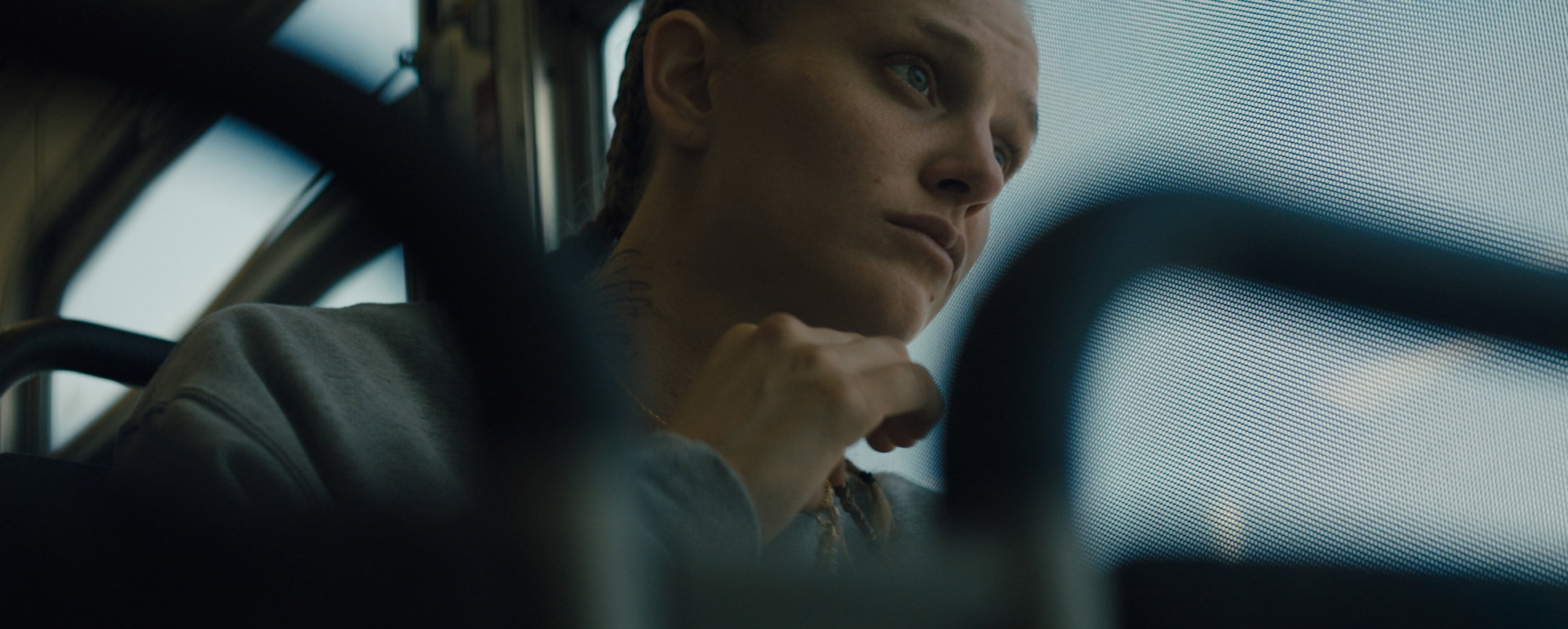
For the sound design and score I worked with my friend Gavin Little at Echolab in Ireland. I’ve worked with Gavin on a bunch of commercial jobs and was lucky enough to have him and his team work on this film.
Finally, after many long months of editing, waiting and working around everyone’s busy schedules, we were finally ready for the telecine. After a number of years, color grading has really become my favorite part of the process. It’s a time when the shoot is over, your cut is locked and you can just make it look perfect. It’s also a time when I get to work with my friend Tom Poole watch him do his magic.
Tom has educated me so much about what’s possible in the grade and also how to just maintain the look of film in everything I do. It’s not just color, but a unique richness and a tangible feeling of film that he brings to the grade that just makes you look at your DP and go “F*@K that’s perfect”.

Now that the film is wrapped and the smoke has cleared, we’re submitting to festivals and trying to get this thing a premiere date in the near future. I’ve learned so many incredible lessons from this film and if I could suggest one thing to a filmmaker that hasn’t made a short yet, it would be definitely write it yourself.
Of course it will be flawed and difficult and imperfect… but it will be yours, and the process of realizing something from words on a page to reality in narrative form will teach you lessons that will make you grow tremendously as a storyteller. In the end we got bloody, exhausted and covered in sweat, but I go back to one of my favorite quotes of all time “It’s not the size of the dog in the fight, it’s the size of the fight in the dog.”

